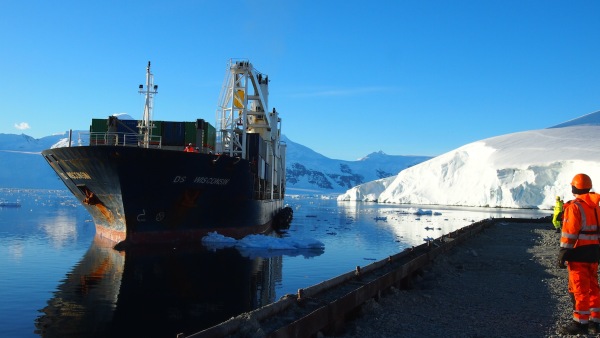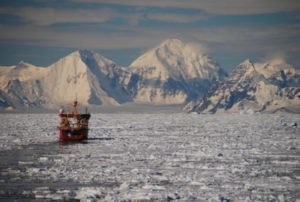
The Republic of the Marshall Islands (RMI) flagged ship DS WISCONSIN, has successfully transported equipment needed for the construction of a new wharf at the Rothera Research Station in Antarctica.

DS WISCONSIN arrives safely in the Antarctic
Rothera Research Station is the largest British Antarctic facility: a center for biological research and a hub for supporting deep-field and air operations, located on Adelaide Island to the west of the Antarctic Peninsula.
The DS WISCONSIN, a general cargo vessel of 9,611 gross tons, managed by German multi-purpose vessel specialist DS Schiffahrt, and operated commercially by its subsidiary DS Multibulk, left the United Kingdom in November loaded with 4,500 tons of equipment and construction materials. These included plant, 83 containers, and 1,000 tons of steelwork.
In a press release, BAM Engineer and project manager Martha McGowan, said:
“Having spent months designing and procuring every single piece of equipment we need to build this wharf, it has finally all come together. We spent 10 days working with Trans Global Projects, DS Multibulk and AV Dawson, and all of the cargo specialists said this was a one off for them in terms of the complexity of the cargo for stowage, how much was being shipped at once and the detailed bio-security checks. Now we are looking forward to being able to unload in Rothera and begin work deconstructing the old wharf, then building the new one.”
Upon the vessel’s arrival McGowan added, “It was a major logistical undertaking to get every single thing needed to build a wharf in freezing Antarctic waters loaded onto one ship. One month and 11,000 kilometers later, it is very good to see all that hard work paying off.”
 The construction of the new wharf is part of a ten-year modernization program to ensure that the research station facilities continue to enable world-leading research.
The construction of the new wharf is part of a ten-year modernization program to ensure that the research station facilities continue to enable world-leading research.
The new wharf will accommodate RSS SIR DAVID ATTENBOROUGH, an advanced polar research vessel operated by the British Antarctic Survey, reducing the manual cargo loading/unloading time during station relief, allowing the ship to spend more time on research cruises. It will also improve the small boating facilities for marine research, including a new larger crane for launching small boats, a personnel gangway and a floating pontoon for the deployment of scientific instruments such as gliders.



